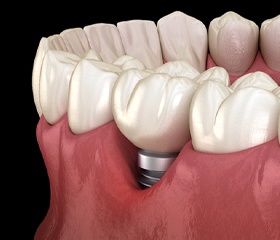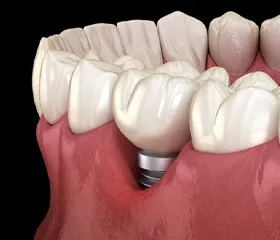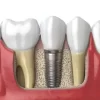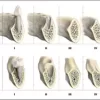- By - Malfaifi
- Posted on
- Posted in Uncategorized, زراعة الاسنان
Implant complications
Clinical complications with implants and implant prostheses
Goodacre et al 2003

- All-ceramic crowns had the lowest incidence of complications (8%).
- Reviewing the literature from 1981 through 2001
- The mean bone loss was 0.9 mm (range from 0.4 to 1.6 mm). The mean loss per year in subsequent years was 0.1 mm (range from 0 to 0.2 mm).
- Mandibular implant fixed complete dentures measured an average total bone loss of 0.9 mm after 10 years and a total of 1.2 mm after 15 years.
- lack of keratinized gingiva and poor oral hygiene were some of the most common reasons for implant loss.
- 6 categories of complications associated with implant prostheses:
- Surgical complications
- Hemorrhage-related complications (24%)
- Neurosensory disturbance (7%)
- Mandibular fracture (0.3%)
- Implant loss
- Implant loss ranged from a high of 19% with maxillary overdentures to a low of 3% that occurred with both mandibular fixed complete dentures and single crowns.
- Implant loss was greater with implants that were 10 mm or less in length (10%) compared with implants greater than 10 mm long (3%)
- type IV bone (16%) compared with types I to III bone (4%).
- Smokers had greater implant loss (11%) than nonsmokers (5%).
- Radiation treatments to the maxilla resulted in a greater implant loss (25%) than the mandible (6%).
- Bone loss
- The mean bone loss occurring during the first year was 0.9 mm, and the subsequent loss per year after the first year was 0.1 mm.
- Peri-implant soft tissue complications
- The most common peri-implant complications were fenestration/dehiscence (7%), gingival inflammation/proliferation (6%), and fistulas (1%).
- Mechanical complications
- There were 14 mechanical complications identified in the literature and the incidence ranged from 30% (implant overdenture clip/attachment loss of retention) to 1% (implant fractures)
- Esthetic/phonetic complications.
- Esthetic complications occurred with a mean incidence of 10% and phonetic complications were recorded with a mean incidence of 7%.



